A Golden Labradoodle is a Labrador Poodle mix dog with a yellow coat. One way of achieving the golden Labradoodle coat is by mating a yellow Lab with an apricot Poodle. But, as a mixed breed, it’s impossible to accurately predict the traits your puppy will have until it arrives. Golden Labradoodles aren’t to be confused with Goldendoodles. This is a different mix of the Golden Retriever and Poodle dog breeds.
The Golden Labradoodle
The golden Labradoodle has taken the dog world by storm. But there is more to the golden Labradoodle than just great looks and a super personality. Did you know the Labradoodle is also one of the first recognized hybrid dog breeds? It’s also one that continues to change the course of canine breeding history! The Labradoodle’s story is fascinating. In this article, learn more about the origins of the golden Labradoodle. As well as how a dog with such gorgeous golden fur is bred and much more.
What is a Golden Labradoodle?
The golden coat color is actually just one of many coat colors a Labradoodle dog can have! Other popular Labradoodle coat colors include:
- Black
- Cream
- White
- Silver
- Red
- Chocolate brown.
Is the Golden Labradoodle a Breed?
There are lots of colors that a Labradoodle can come in. So, the golden Labradoodle isn’t a distinct breed. It is just one of the many beautiful coat colors that a Labradoodle can have. To find out more about the golden Labradoodle’s origins, we need to look at the Labradoodle breed.
Labradoodle History
So how did the golden Labradoodle get its start? In the mid-1980s, a man named Wally Conron worked for the Royal Guide Dog Association of Australia (RGDA) as puppy breeding manager. One day the association got a strange request all the way from Hawaii. It was from a blind woman whose husband was severely allergic to dog dander. She asked if the RGDA could provide her with a non-shedding guide dog.
Mr. Conron initially thought the Standard Poodle would be a perfect fit. But three years later, he still hadn’t successfully trained any of the 33 canine candidates he had in mind. So, Conron bred a Labrador Retriever to a Standard Poodle. The resulting puppy meant the lady got her guide dog and the Labradoodle dog breed was born. But, don’t get the normal Labradoodle confused with the Australian Labradoodle! Even if it was first bred in Australia!
Difference Between Labradoodle and Goldendoodle
The first thing you need to know about golden Labradoodle genetics is that there is another, similarly-named hybrid dog breed called the Goldendoodle. The Goldendoodle is a cross between a Golden Retriever and a Standard Poodle. While the Labradoodle is a cross between a Labrador Retriever and a Standard Poodle. But, the two can look quite a lot alike. Especially if both dogs have golden coats!
Golden Labradoodle Genetics
The golden Labradoodle coat is also called apricot. This is because it can range in color from a lighter golden cream to a darker orange-gold. The official Labradoodle dog breed standard describes the color as similar to the “inside of a ripe apricot.”
Unless you plan to breed Labradoodles in the future, you may not need to know about canine coat color genetics. But, it can still be intriguing to see how the golden Labradoodle gets such a lovely golden coat! All dogs have two pigment types: phaeomelanin (red) and eumelanin (black). But how can you get a golden coat color from a base of red and black?
Getting the Golden Coat
Both of these basic pigment colors can be changed by the actions of other genes called extensions. In the case of the golden Labradoodle coat, phaeomelanin is altered from its default red base color to a lighter golden coat color.
Meanwhile, the other base pigment, eumelanin, is changed to control the Labradoodle’s eye color and nose color. In the case of the golden Labradoodle, the nose color most often stays black, And the eye color can range from brown to hazel.
Golden Labradoodle Temperament
The official breed standard of the Australian Labradoodle Association of America (ALAA), says the Labradoodle dog’s temperament should always display these basic traits:
- Extremely clever
- Sociable
- Comical
- Joyful
- Energetic in play
- Quiet when handled
- Happy and friendly with people
- Keen to learn
- Easy to train
- Intuitive about people’s moods.
This is a pretty great list of attributes. No wonder people love Labradoodles so much!
What About Undesirable Traits?
As with any mix, it’s important to remember that a golden Labradoodle can also inherit undesirable qualities from either parent. Be that the nervousness of some Poodles. Or the destructive chewing habit of some Labradors. But with so many positive traits, it makes sense that the Labradoodle was first bred to be a guide dog in service. In fact, Labradoodles continue to be in high demand as service dogs worldwide. This is because of their friendly, happy, intelligent, loving temperament.
Does Coat Color Impact Temperament?
The Labradoodle hybrid dog breed as a whole is still quite young and has not got a great deal of temperament or genetic history. So there is no data to date suggesting that a Labradoodle’s coat color directly impacts temperament. Rather, the breeder’s commitment to high quality, healthy, safe breeding, whelping, and training practices are the most important factors in producing Labradoodle dogs that meet the breed standard.
Responsible Breeding
Unfortunately, whenever a new purebred breed or hybrid breed becomes as popular as the Labradoodle has become, there will be puppy mills and unethical “backyard breeders”. They will try to take advantage of the demand. They do this by passing off poorly-bred or unverifiable puppies as true Labradoodles. Here, it truly will be up to you, the owner, to thoroughly research any Labradoodle breeder you want to work with. Make sure the breeder’s first priority is breeding healthy, happy, loving dogs.
Or perhaps you want to adopt a Labradoodle from a rescue shelter or charity. Rescue golden Labradoodles may have none, some, or all of the characteristics of any dog who has been abandoned or given up for any number of reasons. In this case, taking the help of expert dog trainers can ease the transition for you both. This can help to overcome any temperament challenges that are present due to the dog’s past.
Golden Labradoodle Health
There is no evidence to date that suggests the golden Labradoodle coat color is directly associated with any breed-specific health issues. But, both the Labrador Retriever and the Standard Poodle dog breeds have known heritable (genetic) health issues. It is impossible to know in advance how two sets of genes will mix to influence a particular puppy in any litter. So you must research the breeder’s approach to canine health in breeding Labradoodles.
Reputable breeders will always ensure prospective parent dogs are health-tested for all known genetic diseases. This helps to avoid breeding puppies with genetic or other health defects.
What are these Health Problems?
The Canine Health Information Center (CHIC) has an updated list of all known genetic health issues for every purebred dog breed known to have them. As part of your research, you can visit CHIC to get the most updated health list for both the Standard Poodle and the Labrador Retriever. Then you can ask your Labradoodle breeder for verification that both parent dogs have been cleared of all known genetic health issues. But, we will also look briefly at these problems here.
Labrador Retriever Known Genetic Health Issues
The CHIC database for Labrador Retriever dogs states that all breeding dogs should be pre-tested for the following genetic health conditions. Make sure your potential breeder does these health tests.
Hip and Elbow Dysplasia
This condition is where the hip or elbow sockets form abnormally. It is a painful issue that can lead to difficulty walking, and arthritis. Labradors are prone to this, especially if they are overweight. Fortunately, breeders can carry out x-rays on potential parents to assess the quality of their joints.
Eye Problems
Labs are prone to eye issues such as: Progressive Retinal Atrophy (PRA) and CNM (Centronuclear Myopathy). Testing for eye problems is important. Especially as PRA causes vision loss and eventually blindness.
Exercise-Induced Collapse
Labrador Retrievers are prone to exercise-induced collapse (EIC). The severity of this can vary. But it involves muscle weakness and inability to move after intense periods of exercise.
Cardiac Problems
Heart issues are another common health problem in Labrador Retrievers that can be tested.
Bloat
Although this isn’t a problem breeders can test for, Labs can suffer from bloat. Many larger breeds are prone to this. This is where your dog’s stomach fills with gas and twists. It is a fatal condition. But surgery can save the dog’s life if the problem is noticed quickly enough.
Standard Poodle Known Genetic Health Issues
Now, let’s move on to the Poodle parent. The CHIC database for Standard Poodle dogs states that all breeding stock should be pre-tested for the following genetic health conditions.
Hip Dysplasia
We have looked at this briefly above. But Poodles are also prone to hip dysplasia and malformed joints. So, it is even more important that both parent breeds get tested for this problem. Hip scores are tested. The lower your dog’s score is the better.
Eye Problems
Standard Poodles are also prone to PRA, just like Labs. So eye exams are another important test to ensure the healthiest puppies. This breed is also prone to eye issues like cataracts. There is no specific test for this. But eye examinations are still important.
Von Willebrand’s Disease
This is a hereditary blood clotting problem that can cause excessive bleeding. DNA tests are available for this. So, ensure your breeder tests for this disease.
Epilepsy
Another potential problem Standard Poodles can face is idiopathic epilepsy. Make sure your breeder knows the parent dog’s family history to ensure their line has had no seizures.
Sebaceous Adenitis
This is a skin disorder that has been seen in Poodles. There is no DNA test. So make sure parent dogs have no history of skin problems. Sebaceous Adenitis can cause blistering, itching, hair-loss, and infections.
Addison’s Disease
Addison’s disease is a condition that affects your Poodle’s blood composition. It is a hormone disorder that unfortunately has no DNA test. So, once again, breeders must know the family history of the dogs they want to breed.
Not All Problems can be Tested For
Not all genetic or idiopathic (of unknown origin) health issues can be tested for in advance. So, it is also important to learn as much as you can about the individual health and temperament history of each parent dog involved in breeding your puppy.
If at all possible, arrange with the breeder to meet and interact with each parent dog. This will help you get a good idea of the temperament your Labradoodle puppy might inherit. Do this and also verify that all testable health issues have been performed on each parent dog. This will give you the best possible chance of bringing home a healthy, happy golden Labradoodle puppy.
Golden Labradoodle Grooming
All Labradoodle puppies will have a puppy coat for at least the first six months of their life. This coat will “blow” or shed out starting around the age of six months. By 12 to 15 months, your puppy’s adult coat will have grown in. An adult Golden Labradoodle dog can have three different coat types: fleece, wool, or hair.
You might wonder how this could be possible! But the answer boils down to the amount of genetic influence each purebred parent dog has over each puppy in a litter. This is where the designation of “hybrid dog breed” becomes particularly important. A Labradoodle puppy will inherit genes from both the Labrador Retriever and the Standard Poodle. And these two purebred dog breeds have very different coat types.
Labrador Retriever Coat Type
The Labrador Retriever dog has a water-resistant, double-layer, short coat. It sheds seasonally (and year-round, to hear most Lab owners tell it).
Standard Poodle Coat Type
The Standard Poodle dog has a dense, curly, single-layer, non-shedding coat. But here, “non-shedding” doesn’t mean that the hair never falls out. Rather, it means that shed hair gets caught in the surrounding coat and must be brushed out manually.
Dog Allergies
If you have an allergy to dog dander, you will want to select a Labradoodle with a coat type more like the Standard Poodle parent. But, it can be hard to know in the first six months of life what coat type a given Labradoodle puppy may have inherited. So, if it is very important that your Labradoodle puppy grow up to have a non-shedding coat, ask the breeder about DNA coat testing. This is a relatively new service that can help predict a Labradoodle puppy’s adult coat type.
Now let’s take a look at how much grooming each one of these three coat types will require.
Golden Labradoodle with Fleece Coat
This Labradoodle has fairly equal influence from each parent dog. It tends to arise most frequently in F1b litters (one hybrid Labradoodle parent dog and one purebred Standard Poodle parent dog) or F2 and later litters (both parent dogs are hybrid Labradoodles).
If your puppy grows up to have a fleece coat type as an adult, the coat will be very soft to the touch. Just like angora goat fleece. The coat will either be wavy or have soft spiral curls. This coat type is sometimes mislabeled as “hypo-allergenic,”. But, the more accurate description would be “less likely to trigger human allergies to dog dander.” Overall, the fleece coat tends to be wash-and-wear and easy to groom.
Golden Labradoodle with Wool Coat
This Labradoodle inherits more genetic influence coat-wise from the Standard Poodle parent dog. If your puppy grows up to have a wool coat type as an adult, the coat will look and feel much like a Standard Poodle coat. It will be wiry and dense with tight curls.
The wool coat needs a lot of grooming to brush out shed, dead hair before it can turn into skin-damaging tangles and mats. Owners often take wool-coated Labradoodles for professional grooming and clipping every six weeks to keep coat growth manageable.
While you are unlikely to deal with any significant “doggy odor,” it is important to be aware the damp wool Labradoodle coat can sometimes have a “wet wool” odor.
Golden Labradoodle with Hair Coat
This Labradoodle inherits more genetic influence coat-wise from the Labrador Retriever parent dog. Often puppies with hair coats come from F1 generation litters (one purebred Labrador Retriever parent dog and one purebred Standard Poodle parent dog).
If your puppy grows up to have a hair coat type as an adult, the coat will look like a straight or wavy much longer and shaggier version of the Labrador Retriever coat. This hair coat type is fairly wash-and-wear. But you can expect more “doggy odor”. Plus lots of vacuuming to keep your home from being blanketed in dead, shed dog hair. And if you have dog dander allergies this is not the coat type for you!
Your Golden Labradoodle
We hope you have enjoyed learning more about all the factors that contribute to creating the most wonderful of hybrid dog breeds, the golden Labradoodle! Are you sharing your life with a golden Labradoodle now? Or are you thinking of adding a Doodle dog to your family? Please post a comment below to share your questions and experiences with the whole community!
Other Interesting Articles
If you’ve loved learning about the golden Labradoodle, you’re also going to love the other great guides we have. Take a look at a few of them below!
- Best Dogs for First Time Owners
- Best Brush For Labradoodle Dogs And Their Curly Coats
- Low Shedding Dogs – The Best Breeds For Limiting Fur
- Australian Labradoodle
- Black Labradoodle
- Red Labradoodle
- Labradoodle vs Goldendoodle
- How to Spot a Bad Breeder
- Fat Labrador
References and Resources
- Tarrant, S., et al, “History of the Labradoodle,” Australian Labradoodle Association, 2019.
- Coren, S., PhD, DSc, FRSC, “A Designer Dog-Maker Regrets His Creation,” Psychology Today, 2014.
- Gestes, T., et al, “Labradoodle Coat Types,” Archview Labradoodles, 2011.
- Huber, D., et al, “The Labradoodle Coat,” Doodle Sweethearts Kennel, 2019.
- Stanford, K., et al, “The Australian Labradoodle/Breed Standard,” Tampa Bay Australian Labradoodles, 2005.
- Buzhardt, L., DVM, “Coat Color Genetics in Dogs,” VCA Animal Hospital, 2016.
The Labrador Site Founder
Pippa Mattinson is the best selling author of The Happy Puppy Handbook, the Labrador Handbook, Choosing The Perfect Puppy, and Total Recall.
She is also the founder of the Gundog Trust and the Dogsnet Online Training Program
Pippa's online training courses were launched in 2019 and you can find the latest course dates on the Dogsnet website

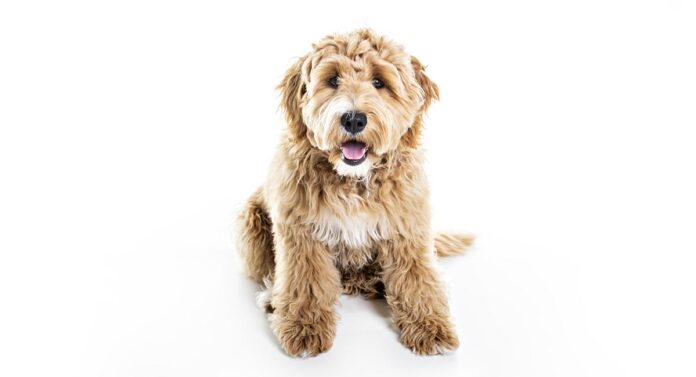
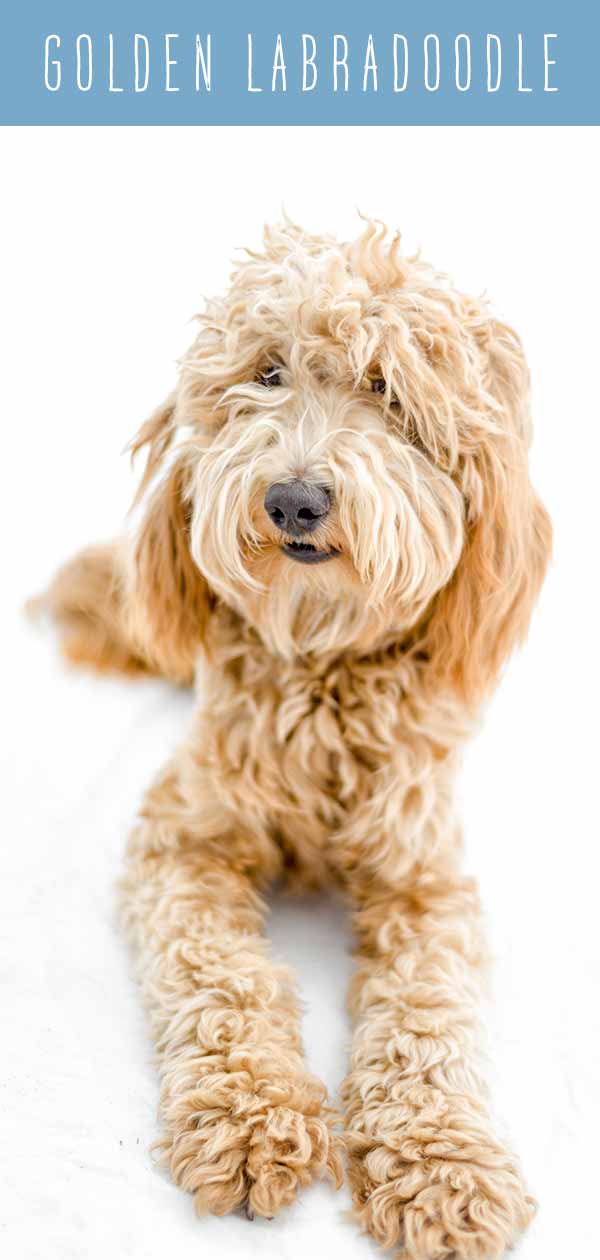




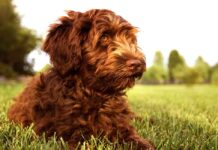
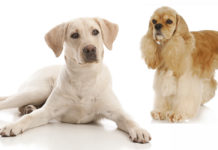
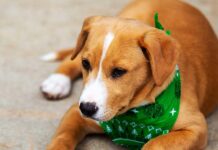
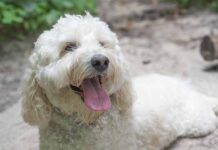
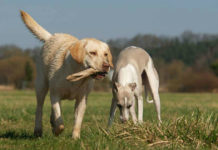









How would you label and what would you think of this puppy:
Black Goldendoodle dame bred with a Silver Labrador stud producing a chocolate pup?